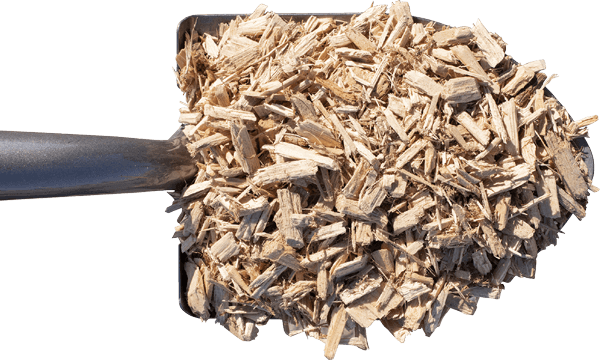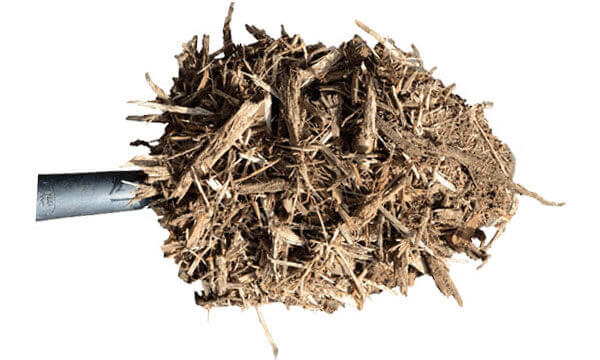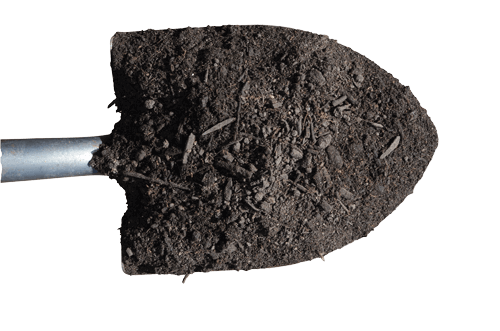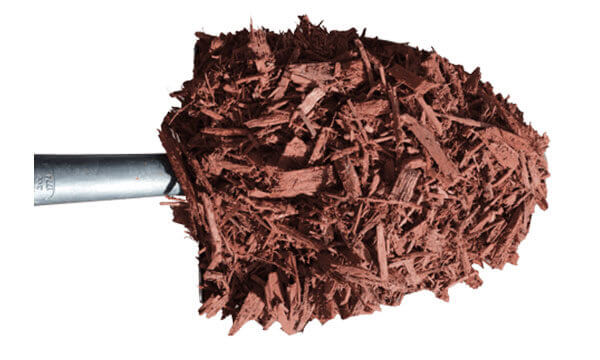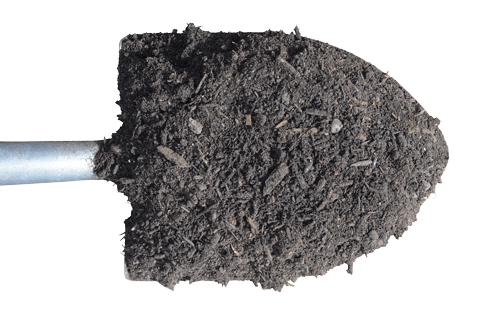While many projects like road construction or lawn care slow down or even pause between the frigid months of November and March in Minnesota, large-scale composting operations present an exception. Food and yard waste that is brought to the SMSC Organics Recycling Facility are able to be composted through the winter.
Much like a large body of water, the bigger the size a compost pile is, the less likely it is to completely freeze. Because the SMSC Organics Recycling Facility composts materials in large windrows, they can maintain their heat extremely well and remain operational—even when the temperatures take a nosedive. Our facility’s windrows normally stack up to 10 feet in the warmer months, but are made slightly larger in the winter to ensure ample heat is maintained.
Though the very outer layer of a windrow does see some freezing activity, the inside of the pile will remain well insulated all winter long. When our windrows regularly have their temperature checked, our staff finds that piles typically reach temperatures between 130°F and 160°F.
As the temperatures drop, it is also important to make a change to the way the windrows are turned. In order for the composting process to work, windrows must be turned year-round. However, this means that the piles will lose a lot of valuable heat. As a result, turning is limited to warmer, double-digit winter days. When the windrows are turned, you may see a large steam cloud that comes from the facility. This is completely normal and can be compared to when you take a lid off of a hot pot. Pressure is being released in the form of hot air. Once the piles are turned and then immediately formed again behind the windrow turner, they can take up to 24 hours to warm back up to their starting temperatures. It is important that the piles are monitored closely during this time so that adjustments can be made if temperatures are not climbing at a fast-enough pace.
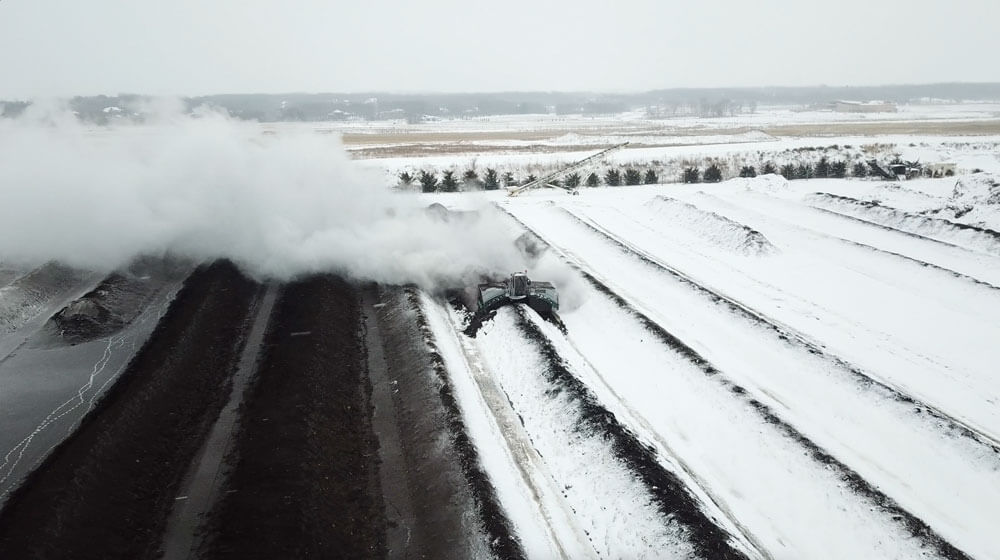
Another way to ensure proper composting is by providing enough water to keep the microorganisms that help break down the organic material active and warm. In the winter, this is no longer as simple as spraying the piles with water. Instead, snow is purposefully added atop the windrows and the warmth from within actively melts it into enough water to keep the compost at an optimal 50% moisture.
Like any task during the Minnesota winter, there are a few challenges that come with composting at low temperatures. With a few modifications to the process, our staff is able to keep the operation going year-round!

